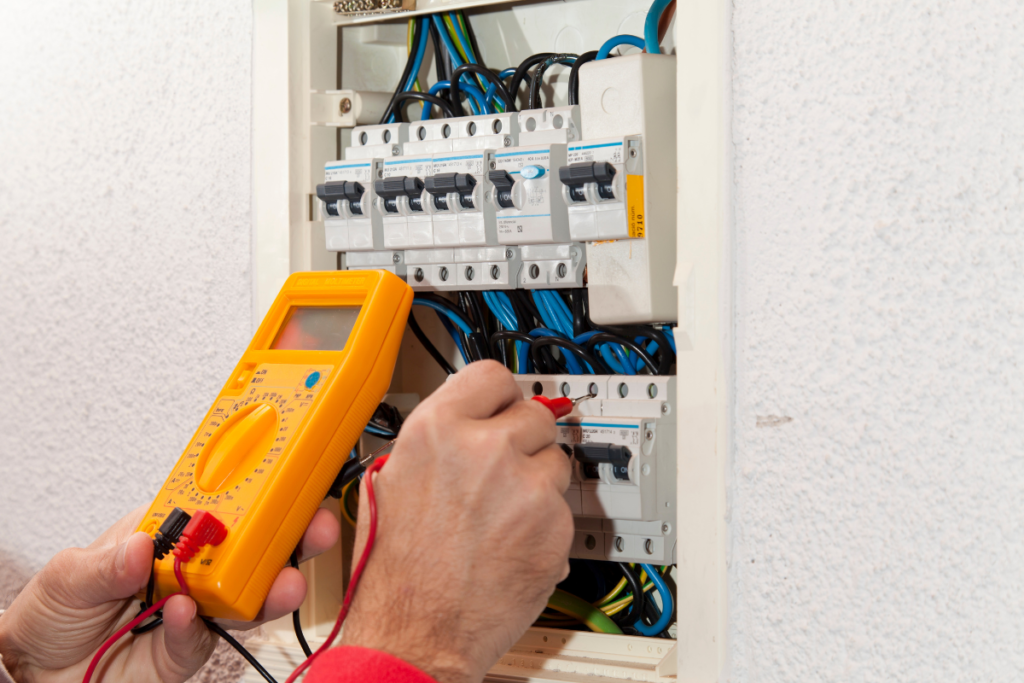The private rental sector is an important part of the UK’s housing market. New electrical safety standards and legal criteria for compliance documentation arrangements in the private rental industry under new rules came into force on 1 July 2020. As a result, all landlords must conduct an Electrical Installation Condition Report (EICR) inspection of their rental premises at least every five years. New tenants must provide a current EICR certificate before moving into the property. A valid EICR is required for all tenants from 1 April 2021, regardless of when their tenancy began before the legislation.
From 1 July 2020: An electrical safety inspection is required for all new specified tenants.
From 1 April 2021: An electrical safety inspection is required for all existing tenancies.
There are enough reasons for landlords to request an EICR. The most common reason to carry out an EICR for rented accommodation is that it is the simplest and most economical way to prove that an electrical installation is safe.
What Is an EICR Test?
EICR is an Electrical Installation Condition Report. It is a formal document after assessing a property’s electrical installation to meet safety and regulatory requirements. It should be done by an experienced, qualified electrician or an approved contractor. This usually means that they have taken a course covering periodic and visual inspection and retrained in various tests. The electrician will note the potentially dangerous faults in the report and notify the landlord of any repairs required with the relevant recommendation codes. The next test date is also included in the certificate.
Who can conduct an EICR?
The regulations require landlords to have their property inspected by a “qualified and competent” person every 5 years. To make it easier, you can contact a 24/7 Serviceteam Registered Electrician, who is highly trained and qualified to perform the EICR test.
EICR Test Procedure
Qualified engineers will assess an electrical installation’s overall build quality, performance and safety and specifically look for defects. The initial stage of the test is usually a visual assessment. They will inspect all electrical devices on your property to see if anything needs repair or replacement. Equipment may break or crack without even your knowledge. There may also be clear signs of overheating, in which case the equipment will need to be replaced.
Next, he must disconnect the electrical installation from the main power supply. A particular dead circuit test is performed to identify wires that are not properly connected. Live electrical tests are also available. These include a Preemptive safety test to check whether the system shuts down within the time limit if a fault occurs. This test highlights the most critical reason for EICR tests. It contains that the components are in a suitable condition to function as intended in the future.
Then the electrician will check the quality of the earthing and bonding and ensure the earth protection is adequate. A further inspection is mandatory for the following equipment: switches, sockets, power supplies, lighting fixtures and any sockets installed on the property. The frequency of EICR inspections varies by property type.
In short, the consumer unit (or fuse board), wiring and electrical components are thoroughly inspected and checked for defects or deviations from wiring standards.
- Adequacy of earthing and bonding.
- Electrical devices for protection against fire and electric shock.
- Any damage or wear and tear affecting the safety of the property occupants.
- Identifying damaged electrical equipment and accessories.
- Identify any exposed live wires that could cause a fire or injury.
During an EICR, the electrician performs several electrical observations and will provide a recommendation code. Observations describe a defect or omission in the electrical installation. Four classification codes indicate the need for further remediation. According to the government rules, codes are as follows.
- Code 1 (C1): Danger exists—the risk of injury. The electrical inspector can make any C1 hazards safe before leaving the property.
- Code 2 (C2): Potentially dangerous.
- Further Investigation (FI): Require Further investigation without delay.
- Code 3 (C3): Improvement is recommended. No further remedial work is required for the report to be considered satisfactory.
Most modern electrical appliances have safety reporting software that includes these codes, making it easier for landlords to understand the electrical installation status. If code 1 (C1) or 2 (C2) is present in the report, it is identified as a risk, and the same goes for further investigation (FI). These codes will effectively mean that the installation is not safe for continued use and address the electrician before issuing a safety certificate.
Consumers often refer to an Electrical Installation Condition Report (EICR) or a Periodic Inspection Report as a Landlord Safety Inspection or Home Buyer Inspection. Do I need an EICR test? The answer is ‘yes’; whether it’s your home, business or rental property, an up-to-date electrical condition report should always cover your electrical installation.
How often should EICR be taken?
- Businesses – Employers are recommended to carry out EICR audits every 5 years.
- Rental properties – Landlords must carry out EICR inspections at least every 5 years or whenever a new tenant moves into the property.
- Homeowners – EICR inspections are recommended every 10 years unless the property has a swimming pool, which should be inspected annually.
Suppose it is found that the landlord is in breach of the legislation and that corrective action is immediately necessary. In that case, the local government may take prompt, emergency remedial action and charge the landlord for the costs incurred. Local authorities can also issue civil penalties of up to £30,000 for breaches of electrical safety regulations.
Do you need to book an EICR test for your property? We at Serviceteam are WHICH? Trusted Trader-endorsed, leading service provider in London with over decades of professional experience. Contact one of our licensed electricians today at 020 3925 6453 or use our online portal to book an electrician.
We will keep you electrically safe!
